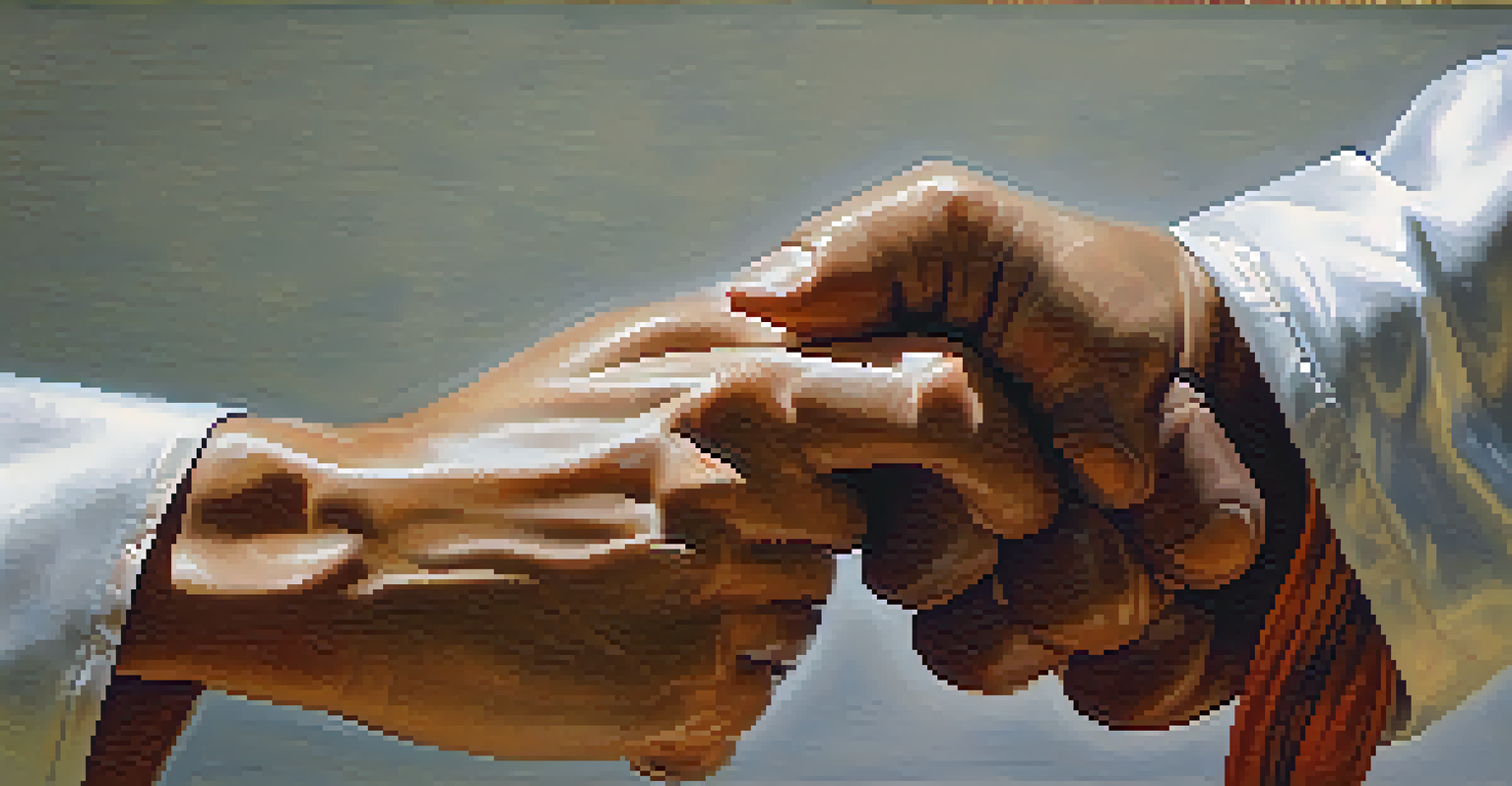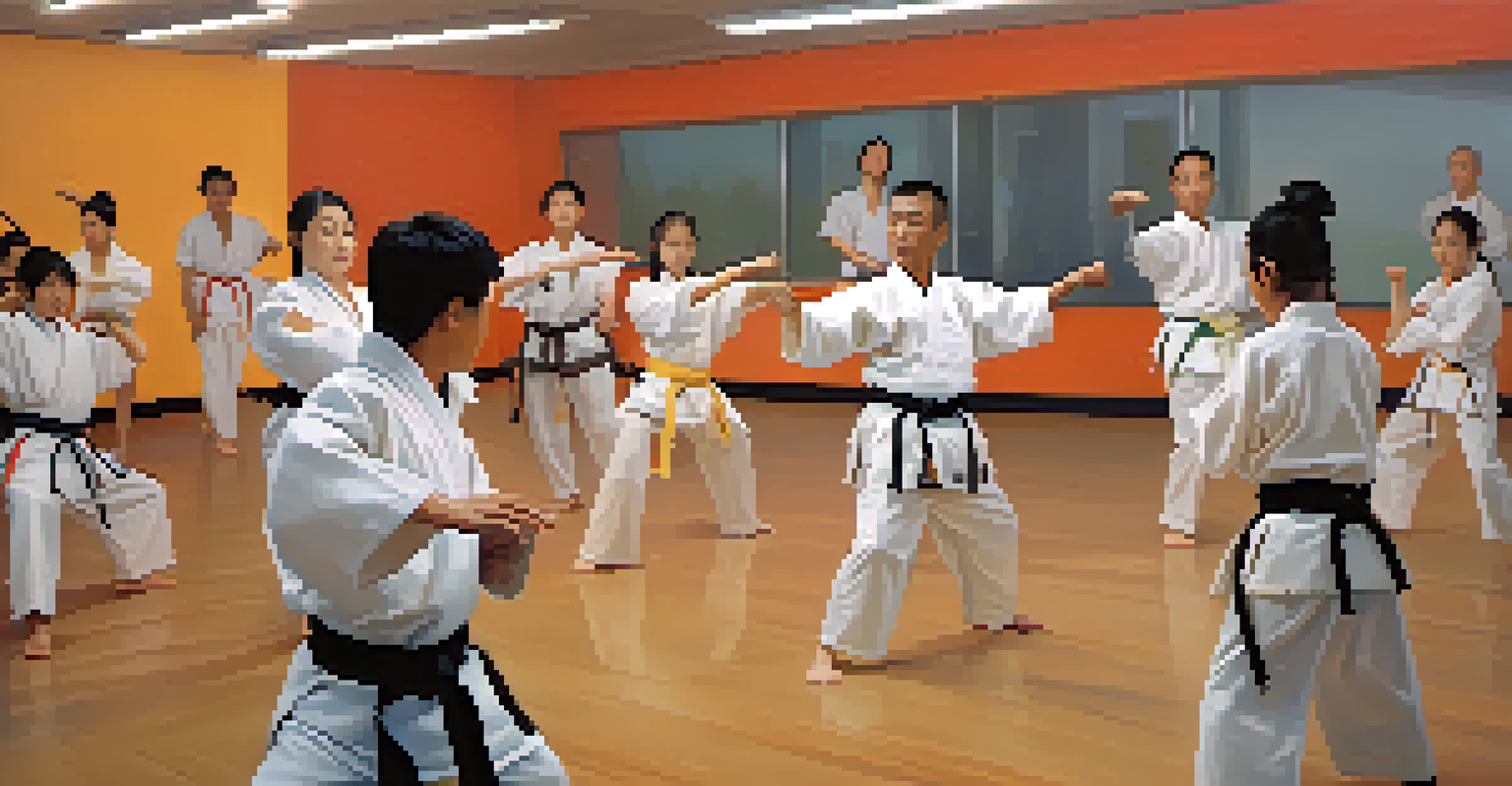How Martial Arts Improve Strength in Injury Recovery

Understanding Martial Arts and Its Benefits
Martial arts encompass various disciplines that focus on self-defense, physical fitness, and mental resilience. From karate to judo, these practices encourage discipline and commitment, essential traits for anyone recovering from an injury. The blend of physical movement and mental focus in martial arts can provide a holistic approach to rehabilitation.
The ultimate aim of martial arts is not having to use them.
By engaging in martial arts, individuals can learn how to control their bodies better, which is vital when recovering from injuries. Techniques often involve low-impact movements that can be adapted to accommodate different recovery stages. This adaptability makes martial arts a suitable option for those looking to regain strength without overstressing their bodies.
Moreover, martial arts classes often emphasize community and support, creating an encouraging environment for individuals on their recovery journey. Being surrounded by others who share similar goals can boost motivation and foster a sense of belonging, which is crucial during challenging recovery periods.
The Role of Strength Training in Recovery
Strength training is a critical component of injury recovery. It helps rebuild muscle, improve coordination, and enhance overall physical function. By incorporating martial arts techniques, individuals can engage in strength-building exercises that are often more dynamic and engaging than traditional weightlifting.

Practicing martial arts requires using body weight and resistance, which can effectively strengthen muscles without the need for equipment. For example, movements like kicks or punches not only improve strength but also enhance flexibility and balance, contributing to a more rounded recovery experience. This multifaceted approach can lead to quicker and more sustainable recovery outcomes.
Martial Arts Enhance Recovery
Martial arts provide a holistic approach to recovery by improving physical strength, flexibility, and mental resilience.
Additionally, strength training through martial arts can also promote joint stability. This is especially important for those recovering from injuries, as stronger muscles support the joints and reduce the risk of re-injury. Overall, the combination of strength training and martial arts can create a powerful recovery strategy.
Enhancing Flexibility and Mobility
Flexibility and mobility are often compromised after an injury. Martial arts incorporate numerous stretching and movement techniques that help restore range of motion. By practicing these techniques regularly, individuals can work towards regaining their pre-injury flexibility, which is crucial for overall physical health.
In martial arts, you can’t just train your body; you have to train your mind as well.
For instance, many martial arts styles include warm-up routines that consist of dynamic stretches, which not only prepare the body for movement but also help in preventing future injuries. Improved flexibility can also enhance performance in everyday activities, making it easier to return to normal routines.
Moreover, the focus on proper technique in martial arts encourages practitioners to move in ways that promote joint health and prevent stiffness. This proactive approach to mobility can lead to long-term benefits, making martial arts an ideal choice for anyone on the road to recovery.
Building Mental Resilience Through Martial Arts
Recovery from injury is not just a physical journey; it’s also a mental one. Martial arts training emphasizes mental discipline and focus, which can be incredibly beneficial during recovery. Practitioners learn to set and achieve goals, helping to cultivate a positive mindset that is essential for overcoming challenges.
The practice of mindfulness in martial arts can also reduce stress and anxiety, which often accompany injury recovery. Techniques such as breathing exercises and meditation are integral to many martial arts, allowing individuals to center themselves and focus on their healing process. This mental clarity can help individuals stay motivated and engaged in their recovery efforts.
Strength Training Through Movement
Incorporating martial arts techniques into strength training helps individuals rebuild muscle and enhance coordination without heavy equipment.
Furthermore, achieving milestones in martial arts can foster a sense of accomplishment and boost self-esteem. As individuals progress in their training, they may find renewed confidence in their abilities, which can translate into other areas of their recovery journey.
The Importance of Balance and Coordination
Injuries can disrupt balance and coordination, making everyday tasks more challenging. Martial arts training emphasizes these skills, providing targeted exercises that improve stability. By engaging in martial arts, individuals can regain their balance through movements that require core strength and body awareness.
For example, many martial arts incorporate stances and footwork drills that focus on maintaining equilibrium. These exercises not only strengthen the muscles responsible for balance but also enhance proprioception—the body’s ability to sense its position in space. Improved proprioception can be particularly beneficial for those recovering from lower body injuries.
Additionally, the dynamic nature of martial arts encourages quick adjustments and reactions, further enhancing coordination. This improved agility can lead to greater confidence in movement, allowing individuals to transition back to their daily lives more seamlessly.
Creating a Customized Recovery Plan
Every injury is unique, and so is the recovery process. One of the great advantages of martial arts is the ability to customize training according to individual needs. Practitioners can work with instructors to develop a tailored recovery plan that accommodates their specific injuries and fitness levels.
This personalized approach ensures that individuals are not pushing themselves too hard and are instead focusing on exercises that promote healing. Instructors can modify techniques to align with recovery goals, allowing individuals to engage in meaningful practice without risking further injury.
Customized Recovery Plans Available
The adaptability of martial arts allows for personalized recovery plans that cater to individual injuries and fitness levels.
Moreover, the gradual progression in martial arts training allows for continuous assessment and adjustment of the recovery plan. This flexibility means that as a person’s strength improves, their training can evolve, leading to ongoing growth and development throughout the recovery journey.
Conclusion: Martial Arts as a Recovery Tool
In conclusion, martial arts offer a multifaceted approach to enhancing strength during injury recovery. By integrating physical training with mental conditioning, individuals can achieve a balanced recovery that addresses both body and mind. This holistic approach can lead to more effective healing and a greater sense of well-being.
Not only do martial arts improve physical strength, flexibility, and coordination, but they also foster mental resilience. The supportive community found in martial arts classes can further motivate individuals to stay committed to their recovery journey. With the right guidance, martial arts can become an invaluable resource during rehabilitation.

Ultimately, whether you’re a seasoned practitioner or a newcomer, martial arts can be a powerful ally in your recovery process. So, if you find yourself on the mend, consider exploring martial arts as a way to regain strength, confidence, and a sense of purpose.